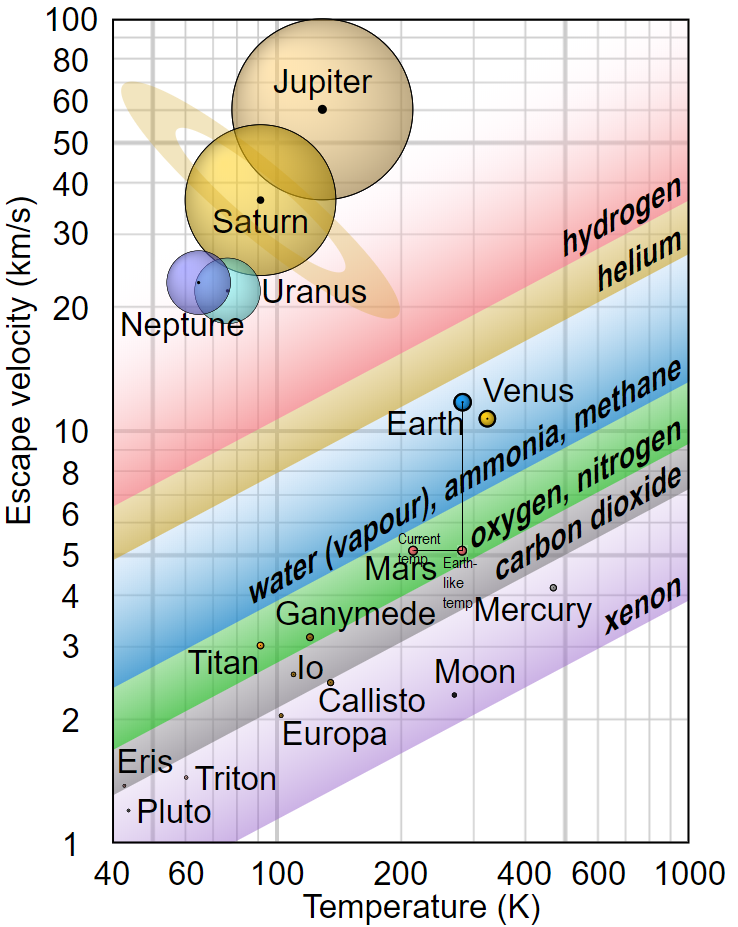
A graph showing the relationship of body mass/temperature and possible lowest molecule retained in the atmosphere. Here is a deeper discussion on the graph and why it's not quite correct but it still gives a hint to what's needed in the game. https://physics.stackexchange.com/quest ... ly-showing

In accrete, a program to simulate star system formation (Dole, 1970), the atmosphere is just presented as the lightest element that a body can retain. Example output:
Code: Select all
Planet #2:
Distance from primary star (in A.U.): 0.405
Eccentricity of orbit: 0.027
Mass (in Earth masses): 0.145
Equatorial radius (in Km): 3394.5
Density (in g/cc): 5.297
Escape Velocity (in km/sec): 5.84
Smallest molecular weight retained: 23.27 (N2)
Surface acceleration (in cm/sec2): 502.53
Surface Gravity (in Earth gees): 0.51
Surface temperature (Celcius): 171.26
...Fix: The fastest way to fix this is probably to let the atmosphere pass a second stage where mass and temperature is taken into account and the lower molecule weights is sieved out. The temperature referred to in the graph is the temperature of the lower thermopause (exobase) on thicker atmospheres and the surface temperature on thinner layers. Also, if you end up with a rare gas being the lightest element possible it would probably not be the bulk of the atmosphere. It would be better to present a more complete gas mixture instead of just one gas.